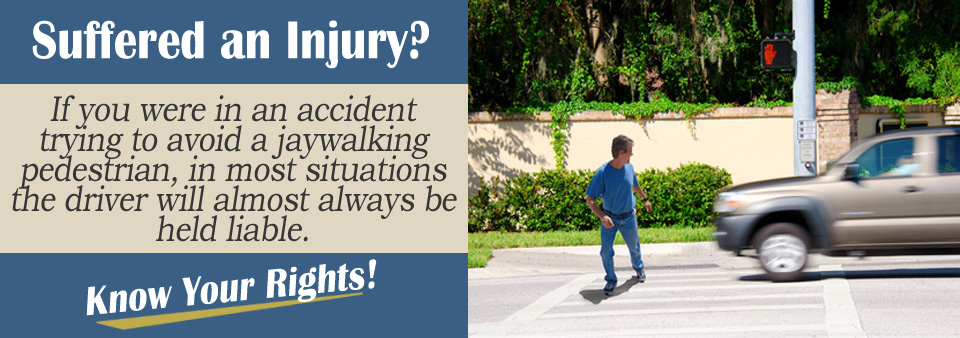Pedestrians have the right-of-way, correct? That is what we are always told, but what happens when the pedestrian is the person causing the crash? Many times, you could be driving your car, following every law possible, and pedestrian steps in your path, leading to an accident.
Are you still able to file a claim for your injuries? We have asked attorney Alaina Sullivan about what you should do. Here is what she had to say:
Duty of Care
Drivers on the road hold a duty of care to others, to protect other individuals on the road, whether walking or driving, from danger. This duty of care requires him or her to act as a reasonable person would in a similar circumstance.
A reasonable person would normally follow the rules of the road, drive the speed limit, and watch for pedestrians around him or her. Similarly, pedestrians hold a duty of care, as well, and are charged with following rules of the road to protect the safety of themselves and others around them.
A pedestrian who runs out in front of traffic with no signal telling him or her to cross would clearly not be following this duty of care. The duty of care standard directs liability when it comes to car accidents, and for this reason, insurers or courts will review the circumstances involved to determine who should be held responsible for damages caused.
Vehicle Versus Pedestrian
However, let’s be realistic. In most situations, even if a pedestrian is jaywalking, the driver will almost always be held liable. It may not be fair, but comparing the car versus the pedestrian, courts and insurance companies is not exactly comparing apples to apples.
One can cause a lot more damage than the other. It is expected that the driver of the car will do anything possible to mitigate harm to others around him or her, and it could be argued that, had the driver been paying attention fully, he or she would have had the opportunity to react appropriately and not hit the jaywalker as well as other items around the scene.
Many factors play into whether the driver of the vehicle is able to stop in time to avoid hitting the jaywalker. For instance, was the driver distracted and not able to react quickly as a result, or was he or she driving too fast to stop safely?
Depending on where the accident occurred, a court or insurance company may argue that the driver should have been cautious to his or her surroundings for these type of occurrences.

Comparative Negligence
The comparative negligence rule takes the amount of liability you would hold for an accident and reduces it by the percentage of fault the other party or parties played in the event.
Thus, if the pedestrian’s negligent actions were found to be a contributing factor to the accident, the amount of damages you would pay due to your liability in the accident would be reduced by that percent. This resolution may not seem fair, but at least it reduces the amount of damages you would need to pay would be reduced and the other party would be held responsible to some degree.
There are a few questions that need to be answered to prove that the pedestrian was at fault or contributed to the accident.
Were you doing everything that you could be doing to protect pedestrians?
In addition to following the rules of the road, you should note if you were distracted by anything at the time of the accident. Even something as simple as switching the radio channel can be the difference between having enough time to stop and having to swerve.
Where was the pedestrian at the time of the accident?
At a crosswalk, you should always expect pedestrians even if they shouldn’t be there. This is especially applicable to large cities. Even if everyone is waiting for the light to change to begin walking, there are always a couple of people that do not have the patience to wait for their turn. As a driver, it is important to take that into account.
Where did the pedestrian emerge?
If the pedestrian began crossing the road at a crosswalk that had clear lines of site, this is a situation where the driver should have been noticed the pedestrian before approaching the crosswalk and adjusted their driving. However, in areas where street parking is popular, a pedestrian may emerge from between two cars. In this case, the driver would not have nearly as much time to react.
Contact an Attorney Today
If you have been involved in a car accident with a pedestrian and you do not believe you are at fault, you should contact an attorney today to discuss your case. A licensed personal injury attorney will be able to evaluate your case and determine if you have a claim against the other party’s insurance company.
To receive the compensation for your medical bills, property damages, and pain and suffering, you should speak with a personal injury attorney in your area today.